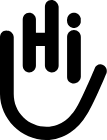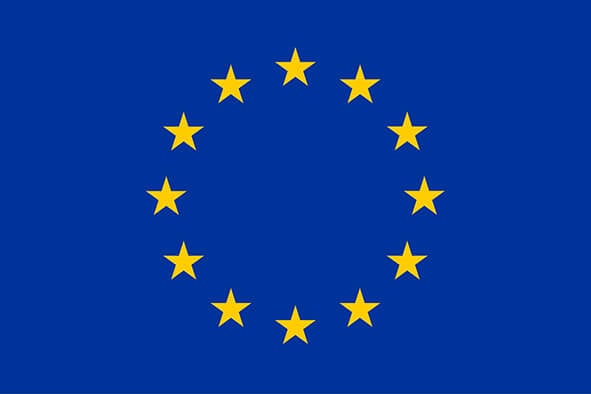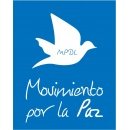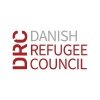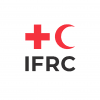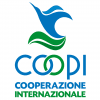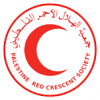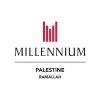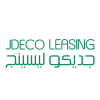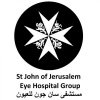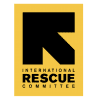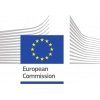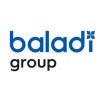Call for proposals: External Evaluation_Development Program
Terms of Reference (ToR) for the evaluation of a program funded by the Catalan Agency for Development Cooperation (ACCD)
General information about the evaluation
Title of the program/project
Protection of the human rights of the population of H2 and Halhul through a gender and disability intersectional approach, Palestine.
Geographic coverage
H2 and Halhul, Hebron, West Bank, oPt.
Program/project duration (mm/yy to mm/yy)
30 months, from 02/01/2023 to 07/31/2025
(initially planned for 24 months)
Program/Project Budget
565,655.00 euros
Evaluation budget
10,000.00 euros
Responsible for evaluation management
Aroa López Roitegui, Country Manager – oPt.
1. Background, justification and purpose of the evaluation
1.1Background
The Occupied Palestinian Territory (oPt) faces a protracted humanitarian crisis after nearly 60 years of Israeli occupation. The Separation Wall, built two decades ago, fragments the territory and restricts the movement of the Palestinian population, subject to Israeli government permits. Furthermore, it suffers violations of international humanitarian law and human rights, including the use of force by Israeli forces, demolitions, seizures of structures, arbitrary arrests, and recurring episodes of violence.
This political and social context has a devastating effect on the Palestinian population's access to healthcare. Territorial fragmentation, the closure of checkpoints, and insecure travel mean that Palestinians cannot access healthcare services, seriously impacting their health. Specifically, people with disabilities are a particularly vulnerable group, requiring specific healthcare services (rehabilitation, surgery, prosthetics and/or technical aids) and constant care that, due to the occupation, the Palestinian public healthcare system is unable to provide. It is also important to highlight that women are also severely affected by this context. Due to the strong patriarchal structure of Palestinian society and the oppression of the military occupation, women and girls live under multiple oppressions that result in systemic violations of their rights and greater difficulties accessing healthcare due to individual limitations.
This program promotes actions to strengthen the protection of human rights for the most vulnerable populations in Hebron, H2, and Halhul, with an intersectional approach to gender and disability. It focuses on improving the protection and physical and psychosocial health of women, girls, boys, and persons with disabilities (PwD), ensuring their access to essential services and their active participation in social transformation through three different components:
Improve access to medical, psychosocial, and legal services for the most vulnerable, with special emphasis on women survivors of or at risk of gender-based violence (GBV). Health services will be strengthened, including specific care for women, and a comprehensive response to GBV will be guaranteed.
Strengthen the protection and community inclusion of women and persons with disabilities. To this end, training initiatives will be developed for communities and professionals to provide them with tools for prevention, detection, and intervention in situations of violence, as well as to increase knowledge about gender-based violence.
Strengthen the commitment and capacity of duty bearers in Palestine and Catalonia to combat GBV and disability-based discrimination through advocacy and awareness-raising actions targeting key actors in Palestinian and Catalan society.
1.2 Justification
Since beginning its activity in Palestine in 1994, MPDL has actively worked with grassroots organizations to provide support to Palestinian women, specifically in the field of disability and the promotion of women's rights. In 1994, MPDL began its work
with PwD, extending its intervention to this day, in alliance with HWC and SHS as is done with the present program.
HWC is an NGO formed in 1985 by healthcare professionals to address the existing healthcare gaps faced by the Palestinian population living in the Occupied Palestinian Territories. HWC professionals provide services to people regardless of race, social standing, religion, or political affiliation. SHS is a Palestinian organization dedicated to the inclusion and empowerment of women with disabilities. Its mission is to promote the rights of women with disabilities and improve their living conditions through development programs, awareness-raising, and advocacy. SHS plays a key role in providing psychosocial support, rights training, and access to resources that strengthen the autonomy and participation of women with disabilities in society.
MPDL and HWC have been working in partnership for over 10 years in the field of disability, with a special focus on women with disabilities in the Hebron Governorate. The incorporation of SHS into this alliance responds to the need to strengthen the rights-based approach for women with disabilities, leveraging its experience in support networks, awareness-raising, and promoting their autonomy. The complementarity between HWC's health expertise, MPDL's rights and protection approach, and SHS's experience working directly with women with disabilities allows for a more comprehensive approach and a greater impact on improving their living conditions and defending their rights.
1.3 Purpose of the evaluation
These ToR specify the details for the Final Evaluation of the aforementioned project funded by the Catalan Agency for Development Cooperation (project code: ACC184/22/00049) and implemented by the organization MPDL - Movement for Peace (hereinafter MPDL) and its two local counterparts Health Work Committees (hereinafter HWC) and Stars of Hope Society (hereinafter SHS) in the West Bank (Palestine).
The evaluation will focus on assessing the degree of achievement of the implemented activities, the achievement of the project objectives, and the expected results.
As a result of this evaluation, the evaluation team is expected to provide recommendations to assess the strategy of MPDL, HWC and SHS in improving the protection and comprehensive health of the population of Halhul and H2, Hebron, especially women and persons with disabilities (PwD, hereafter) and to improve the quality of future projects.
2. Scope of the evaluation
2.1 Objective of the evaluation
Conduct a systematic and objective evaluation of the aforementioned project, its design, execution, and results, in order to determine the relevance and achievement of objectives, development efficiency, effectiveness, and sustainability.
The evaluation should provide credible and useful information, allowing lessons learned and recommendations to be incorporated into the decision-making process of MPDL, its partner organizations, HWC and SHS, and the donor, ACCD.
The principles that underpin the evaluation approach are:
Impartiality and independence of the evaluation process of the programming and implementation functions.
Credibility of the evaluation, through the use of independent and appropriately qualified experts and transparency of the evaluation process, including the dissemination of results;
Stakeholder participation in the assessment process, to ensure that different perspectives and points of view are taken into account.
2.2 Scope
The evaluation will focus on the project implementation period (February 1, 2023 to July 31, 2025) and its geographical location: H2 and Halhul, Hebron, West Bank, Palestine.
The evaluation report should discuss and provide conclusions and recommendations on the following questions:
Effectiveness: To what extent did the activities meet the objectives and results established in the project (as described in the Logical Framework)?
Coverage of needs: Did the project or activities meet the needs of the beneficiaries?
Relevance: Was the project designed in a way that is relevant to achieving its objectives?
Efficiency: Was the project executed efficiently?
Sustainability: Are the results obtained sustainable?
Internal coherence: Were the outcome indicators and their verification methods adequate?
What possible adjustments would the consultants recommend?
Gender mainstreaming: To what extent did the project manage to include a gender perspective?
Impact and indirect effects: Where were there unintended positive/negative effects of the activities?
Synergies: To what extent were synergies achieved with other activities, as well as with local/ international policies and donor policies?
What unmet needs did the evaluation team identify? Are there any relevant aspects for MPDL to analyze in a possible continuation of the project?
Identify the lessons learned and provide recommendations.
The project was designed within the framework of the ACCD's 2019-2022 Development Cooperation Master Plan; therefore, the evaluation must integrate the Human Rights-Based Gender Strategic Approach included in the Master Plan into both the analysis and the evaluation process of the action.
Mainstreaming the Human Rights-Based Strategic Gender Approach into the evaluation of the action involves analyzing whether the project promotes/protects human rights and gender equality. To this end, the evaluation team should:
Focus on the project's design, processes, results, and impacts to demonstrate its effects on gender relations/inequalities and the exercise of human rights.
Understand evaluation as a process that encourages the participation of holders of rights, obligations and responsibilities, contributing to accountability and
capacity building to promote empowerment and transformation for the sake of gender equality and the exercise of human rights.
The evaluation must mainstream the Human Rights-Based Gender Strategic Approach so that:
Evaluate the project's results and impact on gender relations and human rights. The evaluation should mainstream the Human Rights-Based Gender Strategic Approach through the criteria, evaluation questions, and indicators in each of the planned questions, in order to ensure the collection of evidence of the project's effects on gender relations and human rights, especially women's rights.
The active participation of rights-holders (particularly women) must be considered a key element in strengthening their capacities and promoting their empowerment. A clear, transparent, and participatory evaluation methodology must be developed to promote accountability to the primary beneficiaries of the action and ensure their active participation in the evaluation process.
2.3 Limitations
The proposed evaluation framework may be subject to change as agreed between the Evaluation Management Unit (led by MPDL) and the evaluation team. All changes must be validated by the Evaluation Management Unit. Both parties will assess potential constraints affecting the evaluation and proceed accordingly to minimize their impact.
Security concerns regarding the assessment team, the Assessment Management Unit, and other stakeholders involved in the assessment process (i.e., the beneficiary population) will be carefully assessed to ensure the safety of all involved. The fieldwork agenda may be modified to comply with safety and security regulations and the MPDL Security Plan, depending on the situation.
3. Evaluation criteria and questions
The evaluation should focus on the three dimensions of the project:
Identification and design;
Implementation;
Assessment
And it will be based on the following criteria:
Relevance
The appropriateness of the project's objectives to the problems it was intended to address and the physical and political environment in which it operated. This should include an assessment of the quality of the project's design, i.e., its internal logic and coherence.
Efficiency
The relationship between the resources used by the intervention and the changes generated by it (which can be positive or negative). Differences in how an intervention is approached and carried out can have a significant influence on the effects, so it is interesting to consider whether other options achieved the same benefits at a lower cost (or greater benefits at the same cost). It is important to note that efficiency analysis should always closely examine both the costs and benefits of the intervention, as they accrue to different stakeholders.
Effectiveness
How successful the action has been in achieving or progressing toward its objectives. The evaluation should form an opinion on the progress made to date and the role of the action in delivering the observed changes. If the objectives have not been achieved, or things are not going well, an assessment should be made of the extent to which progress has not reached the objective and what factors have influenced why something has not been successful or why it has not yet been achieved. To do this, the effectiveness analysis should identify the factors that drive or hinder progress and how they are linked (or not) to the project.
Impact
The positive and negative changes brought about by a development intervention, directly or indirectly, intentionally or unintentionally.
Sustainability
Measure whether the benefits of an activity are likely to continue after donor funding has been withdrawn. Sustainability analysis should consider beneficiary ownership, political support, economic and financial factors, sociocultural aspects, gender equality, appropriate technology, environmental aspects, and institutional and management capacity.
Stake
The project's ability to meaningfully, actively, and responsibly involve target groups (holders of rights, responsibilities, and obligations) in the different stages of the project, from planning to evaluation, and in the different decision-making spaces of the action.
The following table provides possible evaluation questions to guide the analysis of the criteria. Specific questions related to the intervention mentioned here should be written in the Technical Proposal submitted for this consultancy:
1) Relevance
- Was the project designed according to the needs, demands, and rights priorities to promote equity, gender equality, and human rights in accordance with international standards and treaties and local legal frameworks for human rights and gender equality?
2) Participation
- To what extent have the planned activities been accessible and promoted the active participation of women and disadvantaged groups?
- Has the participation of women and men been equal? If not, what are the reasons?
3) Effectiveness
- To what extent have the project's human rights/gender equality objectives and outcomes been achieved? Do the indicators and sources of verification allow for this assessment?
- To what extent have the resources, services, and benefits provided by the project been distributed equitably between men and women? What are the reasons for this unequal distribution?
4) Efficiency
- Are the expected costs clearly reasonable?
- Could the same results have been achieved at a lower cost? Could the project have been scaled up with the same resources?
- Have sufficient resources (financial, human, and time) been allocated to the intervention to mainstream the Human Rights-Based Gender Strategic Approach into the different phases of the project?
- To what extent have the financial, human, and time resources allocated to reducing gender inequalities been sufficient?
5) Impact
- Does the project design allow us to evaluate the impact of the action?
- What were the expected and unexpected, positive and/or negative impacts of the project on the beneficiaries?
- To what extent has the project contributed to reducing unequal relationships/eliminating barriers and conditions related to the violation of human rights and/or gender equality?
6) Sustainability
- To what extent has the project contributed to increasing the capacities and empowering rights holders?
- To what extent have duty-bearers assumed their role in relation to rights-holders?
- Have outcomes, effects, and processes been identified that have the potential to further contribute to gender equality and/or the exercise of human rights?
For each evaluation criterion, both in terms of processes and results, the evaluation team will be asked to define indicators.
4. Methodological approach that will guide the evaluation
4.1 Phases of the evaluation
The phases of the evaluation will include:
1.Planning This phase will involve the development of the evaluation plan in accordance with the ToR and initial discussions with the Evaluation Management Unit to establish the overall approach to the evaluation and refine the methodology.
2.Cabinet study: This phase will consist of a comprehensive study involving a comprehensive analysis of relevant project documents (design, baseline studies, monitoring reports, publications, training programs, verification sources, etc.).
A) Product resulting from this phase: Initial Report establishing the conceptual framework to be used in the assessment. The Initial Report will include the following sections: i. Introduction;
Evaluation approach;
Assessment methodology, including information on data collection techniques and data sources, sampling and key indicators;
Evaluation criteria and key evaluation questions;
Limitations and challenges;
Work Plan including the composition of the evaluation team, schedules incorporating planned itineraries and visits, planned list of interviews, FGDs and meetings to be held, etc.
Products resulting from the evaluation;
Proposed chronogram.
3.Fieldwork: The hiring of an evaluation team located in Palestine, or with people residing in the territory, will be prioritized, as this facilitates a better understanding of the socio-political context, greater proximity to the beneficiaries and local counterparts, and allows for richer and more comprehensive data collection to sensitive to cultural and community dynamics. Physical presence on the ground also facilitates direct observation, access to remote areas, and more fluid and trusting interaction with the various stakeholders involved in the project.
However, if the evaluation team is located outside the country due to current access restrictions, difficulties in obtaining visas, or security risks, the possibility of conducting the fieldwork online is being considered. In this scenario, the methodology will be reformulated to adapt it to a digital approach, prioritizing techniques such as individual and group interviews via video calls, online or telephone surveys, and the use of collaborative digital tools for data collection and analysis. To ensure the quality of the process, logistical support will be provided by local partner organizations, which will facilitate contact with beneficiaries and key stakeholders and, if necessary, accompany the data collection sessions.
4.Draft Final Evaluation Report: The evaluation team will produce a Draft Evaluation Report with the preliminary results and conclusions of the evaluation, including results, conclusions, lessons learned, and recommendations, as well as an executive summary. This draft version of the report will be sent to the Evaluation Management Unit for review and comment. A) Product resulting from this phase: Draft Evaluation Report.
Subsequently, the evaluation team will reflect on the feedback provided and prepare the Final Evaluation Report, which will be reviewed again by the Evaluation Management Unit for validation.
A) Product resulting from this phase: Final Evaluation Report.
6.Informational meeting and dissemination: This phase will include (1) a briefing meeting with MPDL, HWC and SHS to discuss the main findings of the assessment and (2) a dissemination workshop with the target population.
A) Product resulting from this phase: Final Evaluation Report, conclusions and next steps report, and dissemination program.
4.2 Methodology and tools for evaluation
The consultancy should be based on a desk study and a field visit. The desk study should cover the following elements:
Project contract documents and additional modifications.
Documents produced throughout the project;
Evidence of impact collected by the project, including interim reports;
Other relevant documentation.
In addition, the assessment should be based on interviews with:
Beneficiary population, as well as associated personnel (HWC and SHS) and participants
MPDL Mission Manager in Palestine, and the MPDL Country Manager for Palestine;
Other relevant stakeholders (to be defined).
The methodology and tools used by the assessment team for data collection may include the following:
Primary sources: Participant observations, focus group discussions, structured and semi-structured interviews, in-depth interviews with key stakeholders, participatory evaluation workshops, surveys, etc.
Secondary sources: Review of key reports, visits to project facilities, review of project drafts, review of monthly and final reports, etc.
The methodology must ensure the privacy and confidentiality of informants throughout the data collection process. Furthermore, sociocultural and institutional contexts must be respected, enabling the veracity of the information to be demonstrated.
Considering the specifics of the context in which the evaluation will be conducted, it is important for the evaluation team to anticipate the risks involved in implementing the evaluation to ensure the safety of all stakeholders involved in the process.
4.3 Stakeholder Engagement
The evaluation should adopt an evaluation methodology consistent with the project's participatory approach. The evaluation team is expected to conduct a participatory evaluation that allows for meaningful participation by the project's partner counterpart, the beneficiary population, and other stakeholders. Stakeholder participation should be an integral component of evaluation design and planning, data collection, writing of findings, evaluation reporting, and dissemination of results.
Therefore, the evaluation should focus not only on quantifiable results, but also on analyzing the processes and dynamics generated by the project, its scope (in terms of people and other actors involved), and its sustainability. This entails moving away from a purely technical approach to understanding the context in which initiatives with PwDF are developed in Palestine and assessing the support this project provides to them.
The assessment team is therefore expected to engage with stakeholders not only to gather information and insights, but also to make (collective) sense of them in order to understand the following:
Your commitment to the process, how it has been promoted and how it fits with your own work/goals;
The difficulties they have had to face to participate in the project (internal and external);
Their perspectives on the main issues.
The capacity, awareness, relationships, and resources developed during their involvement with the project and what they have been able to do with it.
5. Sources of information available for evaluation and methodological guidelines
The following information is available for the preparation of the evaluation:
Program documents or
Project proposal (form)
Logical Framework Matrix (LFM)
Submitted budget
Chronogram
Monitoring and follow-up reports.
Financial reports
Information on the execution in the field or
Sources of verification
Minutes of follow-up meetings,
Internal follow-up
Collaboration agreements
Secondary sources
Reports from international organization
Context reports from NGOs
6. Evaluation process: schedule, logistical support and budget
The assessment will last a maximum of 10 weeks and is expected to take place during September and October 2025. The start date will be discussed and agreed upon with the selected assessment team. However, it should be noted that the assessment must be completed by November 2025.
The evaluation team will clearly specify a guideline timeline for the evaluation in accordance with the schedule set out in section 5 of the current ToR for the submission of expected deliverables. This schedule may vary during the evaluation's implementation by prior agreement between the Evaluation Management Unit and the evaluation team.
The budget for this evaluation is €10,000, including all expenses (salaries, per diem, transportation, materials, etc.) and taxes. Both MPDL and the local partners (HWC and SHS) will provide logistical support to the evaluation team during the fieldwork phase and for dissemination meetings.
7. Evaluation team profile (qualifications and skills required)
The evaluation team is expected to:
Be composed of a team leader (who will assume coordination functions and be the focal point of the evaluation along with the Evaluation Management Unit and the donor) with extensive documented experience in similar evaluations of civil society projects in the fields of disability, human rights (including women's rights), and GBV in the MENA region.
Have extensive experience conducting external evaluations in the context of development cooperation and humanitarian action and a proven track record of professional results (at least 3 years).
Have a solid understanding of social research methodologies and data collection tools.
Have proven experience in gender-focused evaluations.
Be able to communicate effectively in spoken Arabic.
Have excellent English writing skills (C1 level)
Have proven previous work experience in Palestine and up-to-date knowledge of the context.
Have process management skills, such as facilitation skills.
Ensure that you have not intervened in the design or execution of the project to be evaluated.
8. Management of the evaluation process
The main actors involved in the following evaluation will be the following:
Evaluation Management Unit:
Composed of the MPDL Country Manager for Palestine, the MPDL Mission Manager in Palestine, the Health Services Coordinator and Fieldwork Coordinator of HWC, and the SHS Project Coordinator.
The Evaluation Management Unit will be responsible for selecting the evaluation team (based on the review and evaluation of the proposals received). The Evaluation Management Unit will also verify that the evaluation is being conducted in accordance with the Terms of Reference and the Methodological Proposal submitted and validated by the evaluation team.
The Evaluation Management Team will be the main interlocutor with the evaluation team for monitoring the evaluation process and will propose changes if deemed necessary.
The Evaluation Management Unit will also be responsible for facilitating contacts and access to the project's beneficiary population and other stakeholders, and supporting the evaluation team in organizing field visits.
Subjects of the evaluation:
Rights holders: People with disability (women with functional diversity), Caregivers of People with functional diversity, Family and People with functional diversity, and children.
Responsibility holders: Members of local communities.
Duty bearers: Local and national public institutions that have participated in some activities and/or have had a relationship with the project.
HWC staff implementing the project.
SHS staff implementing the project
Evaluation Team:
The evaluation team is expected to lead the evaluation process in accordance with the content of these Terms of Reference and the validated Initial Report, and to submit a Final Evaluation Report that meets the requirements established in these Terms of Reference and the service contract signed with MPDL.
9. Expected products
All deliverables must be submitted electronically to the MPDL Mission Manager in Palestine in English.
Deliverables include:
PRODUCTS EXPECTED
DESCRIPTION
DEADLINE FOR
THE
PRESENTATION
Report of start
It will include the following contents:
● Introduction: Brief description of the background, purpose and scope of the evaluation according to the ToR.
● Evaluation approach: Description of the evaluation approach, highlighting the approach used and key considerations.
● Evaluation Methodology: Description of the evaluation methodology; evaluation matrix with key indicators; description of data collection methods and key data sources.
● Evaluation criteria and key evaluation questions.
● Limitations and challenges: Discussion of difficulties and challenges of the evaluation.
● Work Plan: Composition of the evaluation team, schedules including itineraries and planned visits, planned list of interviews, focus group discussions and meetings to be held, etc.
● Products to be delivered evaluation results.
● Proposed schedule.
It will be sent to the Evaluation Management Unit for validation after document review.
Mid week 3.
Draft from the report of assessment
It will include preliminary results and conclusions and will be presented to and reviewed by the Evaluation Management Unit. The Evaluation Management Unit will provide feedback to the evaluation team accordingly.
The draft evaluation report should include the following contents:
1. Introduction.
1.1 Background and objective of the evaluation.
1.2 Methodology and techniques used in the evaluation (including gender analysis tools).
1.3 Challenge and limitations
1.4 Presentation of the evaluation team
.
2. Project Description.
3. Analysis of findings according to evaluation criteria.
4. Conclusions.
5. Lessons learned.
6. Recommendations.
7. Communication and dissemination plan for the evaluation results.
End of week 6.
Report of
assessment end
The Final Evaluation Report must include the following sections and contents:
0.Executivesummary 1. Introduction.
1.1 Background and objective of the evaluation.
1.2 Methodology and techniques used in the evaluation (including gender analysis tools).
1.3 Challenges and limitations.
1.4 Presentation of the evaluation team.
2. Project Description.
3. Analysis of findings according to evaluation criteria.
4. Conclusions.
5. Lessons learned.
6. Recommendations.
7. Communication and dissemination plan for the evaluation results.
8. Annexes:
- Terms of Reference for the Evaluation
- Evaluation proposal - Start-up report
- Logical framework of the project
- Map of the project area
- List of key informants
- Photographs
- Bibliography
- Other technical annexes
A first draft of the report will be sent to the Evaluation Management Unit for review and comments. The evaluation team will then reflect on the feedback provided and prepare the final version of the report, which will then be reviewed again by the Evaluation Management Unit. The Evaluation Management Unit will then validate the final report.
End of week 8.
10. Dissemination plan and responsibilities for sharing and using the results
A briefing will be held with the participation of MPDL, HWC, SHS, and the evaluation team to discuss the report's main findings and recommendations. The dissemination meeting with the beneficiary population will focus on lessons learned and recommendations for improving future projects and informing relevant policies.
Interested parties are requested to submit an electronic copy of their expression of interest/proposal with the subject REF: ACCD Final Evaluation PRG.19 to Ana Castillo, MPDL OP Manager for Palestine ([email protected]) in copy to Aroa Lopez the Head of the Palestine Mission ([email protected])
In their application, candidates must submit the following:
A cover letter (maximum 5 pages, CV not included) stating:
The suitability of the consultants for the assignment and the match with previous work experience, qualifications, etc.
How the team will be composed and the tasks assigned to each team member.
Technical offer with the work methodology.
Draft work plan and suggested schedule.
Economic offer and budget breakdown.
Provisional availability to carry out the consultancy within the period specified in these Terms of Reference.
Professional profile of the evaluation team/company (including the CVs of all participants in the evaluation team).
Questions related to the interest/proposal process can be directed to Ana Castillo,MPDL Country Manager in Palestine ([email protected]) in copy to Aroa Lopez the Head of the Palestine Mission ([email protected]).
Deadline for the submission of the proposals: 20th of August 2025.

